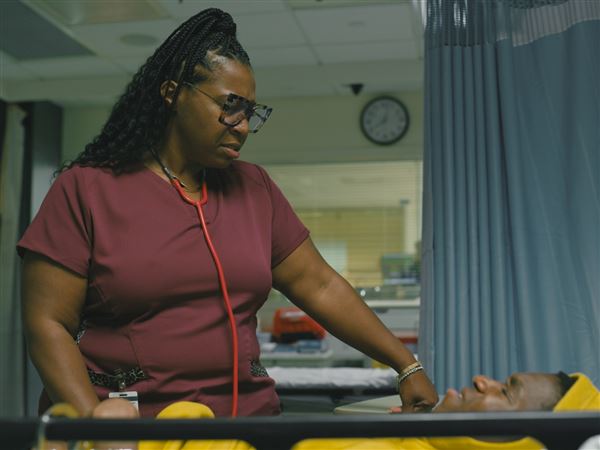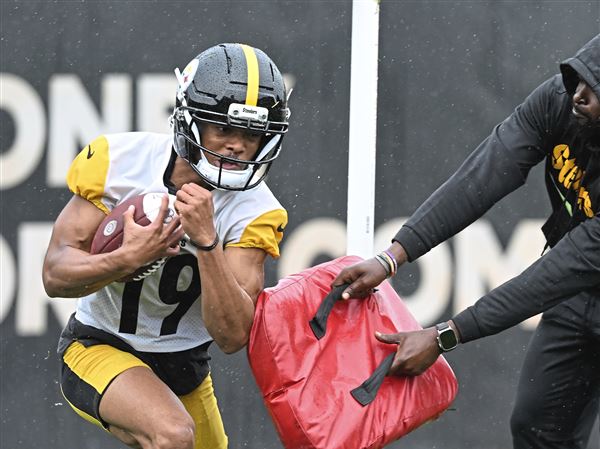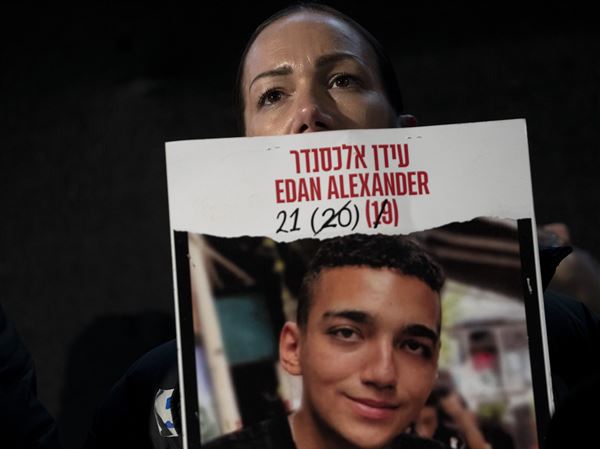Let's start with where the hope lies.
Here's how teams of the National League Central fared in the second half of last season.
Team
Won
Lost
GB
PCT
Astros
43
38
--
.531
Pirates
40
41
3
.494
Cardinals
39
42
4
.481
Cubs
36
45
7
.444
Reds
36
45
7
.444
Brewers
35
46
8
.432
After 14 losing seasons, however, Pirates fans know one thing: Hope lies.
You don't have to dig far to uncover reasons to doubt this team, even in the Comedy Central.
I went with the second-half record for two reasons. First, it's a longer look than the oft-touted 37-35 record after the All-Star Game, and shows how fragile a winning record can be when you add only nine games, never mind 90 more.
Second, www.dougstats.com ranks teams in various categories over the last 81 games, and so offers a good overview.
The good news from late summer was pitching. The Pirates' 4.19 earned run average was fourth behind the Astros, Padres and Dodgers. Only Dodgers pitchers gave up fewer home runs (74) than the Pirates (77).
Batters are Pittsburgh's problem. The .264 second-half average was OK, but the Pirates hit the fewest home runs and were third from the bottom in doubles and walks. The team finished a distant last in slugging (.373 to the Brewers' .402) and third from the bottom in on-base average (.319)
So its OPS (On-base Plus Slugging) was last, thus it's no surprise the Pirates scored the fewest runs in the NL in this period.
The Pirates were outscored, 370-327, in the second half. So while it's legitimate to say the second-half record is more indicative of the returning team than the overall 67-95 record, it's just as clear the team needs vast improvement from its hitters.
We'll check full-season stats now. The Pirates have only three regulars who outperformed the average starter at his position: Freddy Sanchez, Adam LaRoche and Jason Bay.
Let's go position by position, using data provided by Jeff Sackman in a Jan. 31 piece in The Hardball Times, "Average Is as Average Does."
Rather than compute the averages of all players at a given position, Sackman concentrated on the regulars. He averaged the 25 major-league players who got the most playing time at each spot.
I'll rank each Pirates starter by his success last year against the average starter's OPS.
AVG
OBA
SLG
OPS
Bay
.286
.396
.532
.928
AVG LF
.284
.363
.481
.845
LaRoche
.285
.354
.561
.915
AVG 1B
.290
.374
.508
.882
Sanchez
.344
.378
.473
.851
AVG 3B
.284
.356
.482
.838
R. Paulino
.310
.360
.394
.754
AVG C
.285
.342
.435
.777
X. Nady
.280
.337
.453
.790
AVG RF
.285
.358
.469
.828
J. Wilson
.273
.316
.370
.686
AVG SS
.280
.336
.422
.758
J. Castillo
.253
.299
.382
.682
AVG 2B
.284
.341
.426
.767
C. Duffy
.255
.317
.338
.654
AVG CF
.274
.341
.447
.788
A few things stand out in that sea of numbers. The good news is that the best hitters generally play first base, left field and third base, and the Pirates still managed to have above-average hitters at each position.
Other news isn't so good. Who knew that many starting catchers hit with power? Paulino had a fine rookie year, but he'll have to repeat it just to stay even.
Including his play as a Met, Nady was close to average, but not quite there. If he can't get his numbers up, the Pirates could use a left-handed platoon partner sooner rather than later.
Wilson is not likely to hit as well as the average shortstop much less the average No. 2 hitter, but his old-school manager still wants all his pretty outs near the top of the order so his best hitter can bat fifth.
We will ... have Bay bat by the second inning. That should leave plenty of time to stand in the Penn Pilsner line.
Wilson was a hair closer to the average shortstop than Castillo was to regular second basemen. Among the 25 with the most plate appearances, Castillo was last in OPS.
If you want to know how the Pirates will do this season, you could do worse than watch Castillo and Duffy. The latter was furthest below the norm among regulars. In the second half, however, Duffy hit .282/.345/.366. He'll never have power, but if Duffy can get on base at that rate and steal bases at his career 90 percent rate (28 of 31) he can lead off forever.
That leaves Castillo. We've heard of his potential for three years, but his rates tumbled last year after progress in 2005. Stardom is too much to ask, but at 26, it's his make-or-break year to be a good ballplayer.
If Castillo can hit .280, walk a dozen more times and not ground into 22 double plays, he won't be a star but the Pirates will win more games. The season can go well only if moves toward decency are made from the low end of the bat pool.
First Published: March 6, 2007, 5:00 a.m.















